With spring here, take some time to inspect your home. Use these tips on what to look for before a small issue becomes an insurance issue.
Foundation
Walk around your home, paying close attention to where the soil line meets your the foundation. Clear the space around any foundation vents you find.
Is there any pooling water?
Do your downspouts extend past your home’s foundation or do they empty straight down into soil that has started to erode?
Clear any obstructions blocking the flow of water away from the house, you may want to install a rock drainage trench where the soil has eroded.
Ensure you have a suitable slope around your home, the ground should have a 15 cm drop for every 3 metres, a line level may be used if you are unsure.
Is there any pooling water?
Do your downspouts extend past your home’s foundation or do they empty straight down into soil that has started to erode?
Clear any obstructions blocking the flow of water away from the house, you may want to install a rock drainage trench where the soil has eroded.
Ensure you have a suitable slope around your home, the ground should have a 15 cm drop for every 3 metres, a line level may be used if you are unsure.
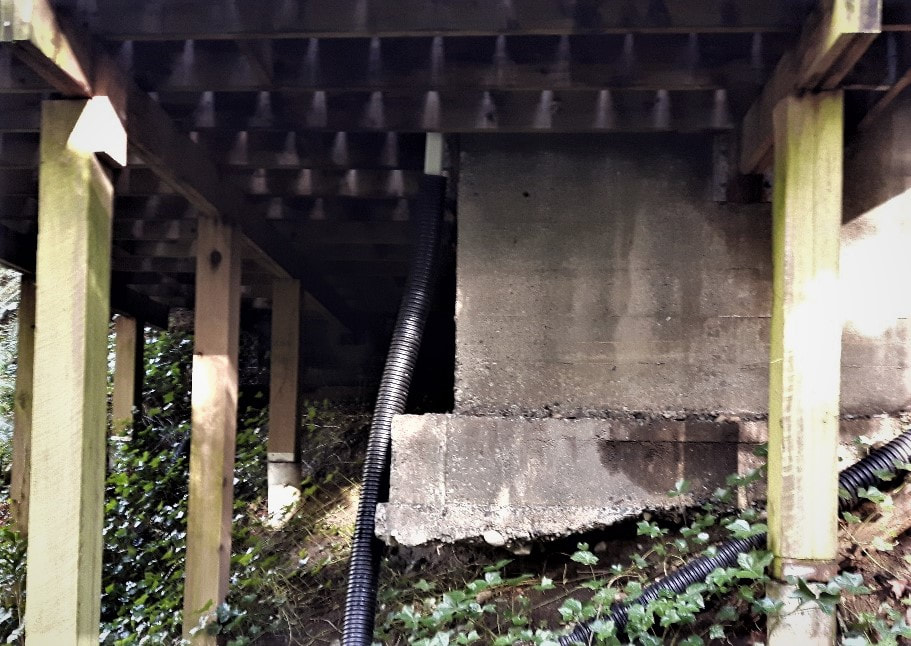
Look for any cracks in the foundation, both from the exterior and in the basement. Use tape to mark the length and width and reinspect often for any growth.
It is important to have a qualified professional inspect any cracks in the foundation. Some may be an easy repair with an injected epoxy; serious cracks may require excavating.
Do not procrastinate with the structural safety of your home, it will always cost more the longer you wait.
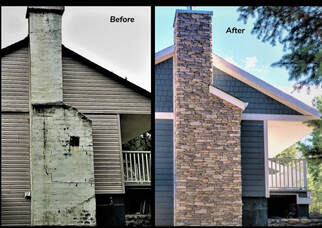
Call a specialist immediately if you notice any of the following:
• Two vertical cracks on adjacent walls could be a broken footing
• A horizontal crack, a metre below grade, even a hairline crack, may signal a loss in structural integrity
• Linear cracks in cinder blocks and bricks (not the mortar) are a serious structural concern
• Two vertical cracks on adjacent walls could be a broken footing
• A horizontal crack, a metre below grade, even a hairline crack, may signal a loss in structural integrity
• Linear cracks in cinder blocks and bricks (not the mortar) are a serious structural concern
Exterior
Check masonry for vertical alignment.
A bulging or sunken brick indicate an unseen moisture issue behind the masonry. Look for efflorescence; a white chalky substance that can indicate masonry joints are no longer repelling water but absorbing it.
Check your siding for any changes in alignment.
Swelling and warping indicates trapped moisture. Inspect seams for mildew and mold. Look closely for holes, even small ones, can be a cause for water penetration and may be caused by insects.
Check masonry for vertical alignment.
A bulging or sunken brick indicate an unseen moisture issue behind the masonry. Look for efflorescence; a white chalky substance that can indicate masonry joints are no longer repelling water but absorbing it.
Check your siding for any changes in alignment.
Swelling and warping indicates trapped moisture. Inspect seams for mildew and mold. Look closely for holes, even small ones, can be a cause for water penetration and may be caused by insects.
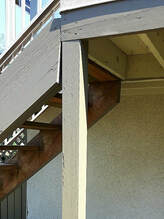
Deck
Check for warped boards, any pulling away from posts, and loose hardware.
The most important part of inspecting your deck is the hardware. Broken hardware or improperly installed hardware directly affects the safety of your deck.
Check for warped boards, any pulling away from posts, and loose hardware.
The most important part of inspecting your deck is the hardware. Broken hardware or improperly installed hardware directly affects the safety of your deck.
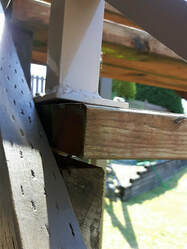
Pay close attention to where railings are attached and that all of your connectors and fasteners are rust and damage free.
Clean off any residue and algae. If you notice water beading on the surface you can wait to reseal. If the wood is absorbing the water it's time to stain and seal.
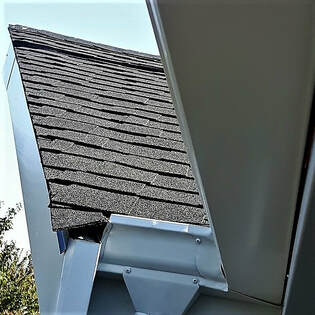
Roof
You can use binoculars to inspect your roof instead of risking the climb.
Look for any shingles that are curled or buckled and any shifts or sagging.
Clean gutters, check for leaks & make sure they’re attached securely
Check the attic for leaks, mold, and moisture intrusion.
Notice any fire hazards or evidence of critters?
Dealing with these issues quickly can prevent the need to install a new roof, and keep you safe from health dangers caused by mold and animal leavings.
You can use binoculars to inspect your roof instead of risking the climb.
Look for any shingles that are curled or buckled and any shifts or sagging.
Clean gutters, check for leaks & make sure they’re attached securely
Check the attic for leaks, mold, and moisture intrusion.
Notice any fire hazards or evidence of critters?
Dealing with these issues quickly can prevent the need to install a new roof, and keep you safe from health dangers caused by mold and animal leavings.
Interior
Inspect caulking around windows for any cracks and repair as needed. This will ensure the seal is kept and keep energy consumption down.
Remove any storm windows and wash exterior windows before installing screens.
Check your interior water lines
Check the washing machine fill hose for any cracks as this line is constantly under pressure and leaks here can go unnoticed resulting in expensive repairs to floors and drywall.
Inspect dishwasher lines and under sink connections to ensure moisture is not present and lines are in good shape.
Check your drains for good flow, if you notice a lag have an experienced company or a plumber flush your drains.
Inspect your bathroom and kitchen caulking for cracks that can lead to water infiltration. Many cabinets are made with particle board which sucks in water and permanently swells.
Vacuum your refrigerator coils and inspect for any leaks or moisture stains.
Replace furnace and water filters.
Have your vents cleaned, this can prevent many airborne allergens from recirculating within your home.
Inspect caulking around windows for any cracks and repair as needed. This will ensure the seal is kept and keep energy consumption down.
Remove any storm windows and wash exterior windows before installing screens.
Check your interior water lines
Check the washing machine fill hose for any cracks as this line is constantly under pressure and leaks here can go unnoticed resulting in expensive repairs to floors and drywall.
Inspect dishwasher lines and under sink connections to ensure moisture is not present and lines are in good shape.
Check your drains for good flow, if you notice a lag have an experienced company or a plumber flush your drains.
Inspect your bathroom and kitchen caulking for cracks that can lead to water infiltration. Many cabinets are made with particle board which sucks in water and permanently swells.
Vacuum your refrigerator coils and inspect for any leaks or moisture stains.
Replace furnace and water filters.
Have your vents cleaned, this can prevent many airborne allergens from recirculating within your home.
Spring thaw can be just as rough on your home as winter storms. Knowing what to look for and how serious, allows you to hire professionals before a small repair escalates into major reconstruction. An afternoon spent around the house twice a year will save you thousands of dollars and months of stress.

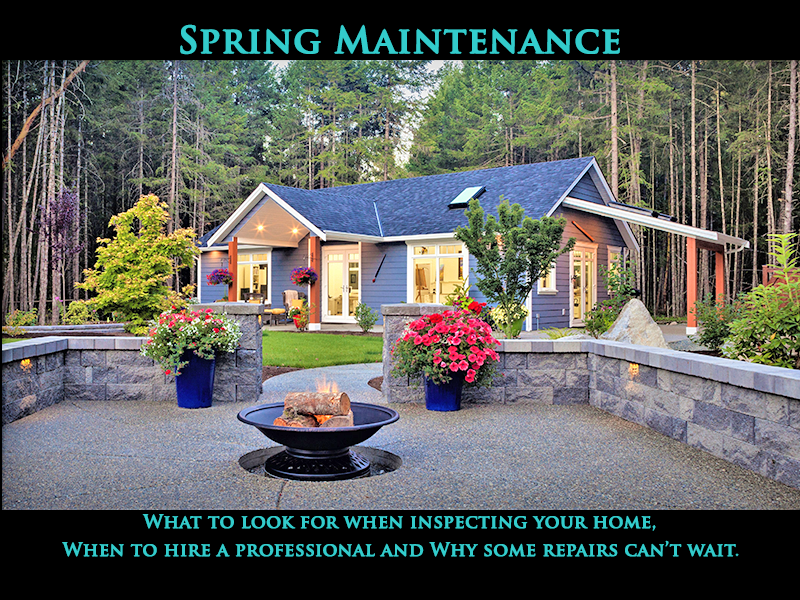

 RSS Feed
RSS Feed





